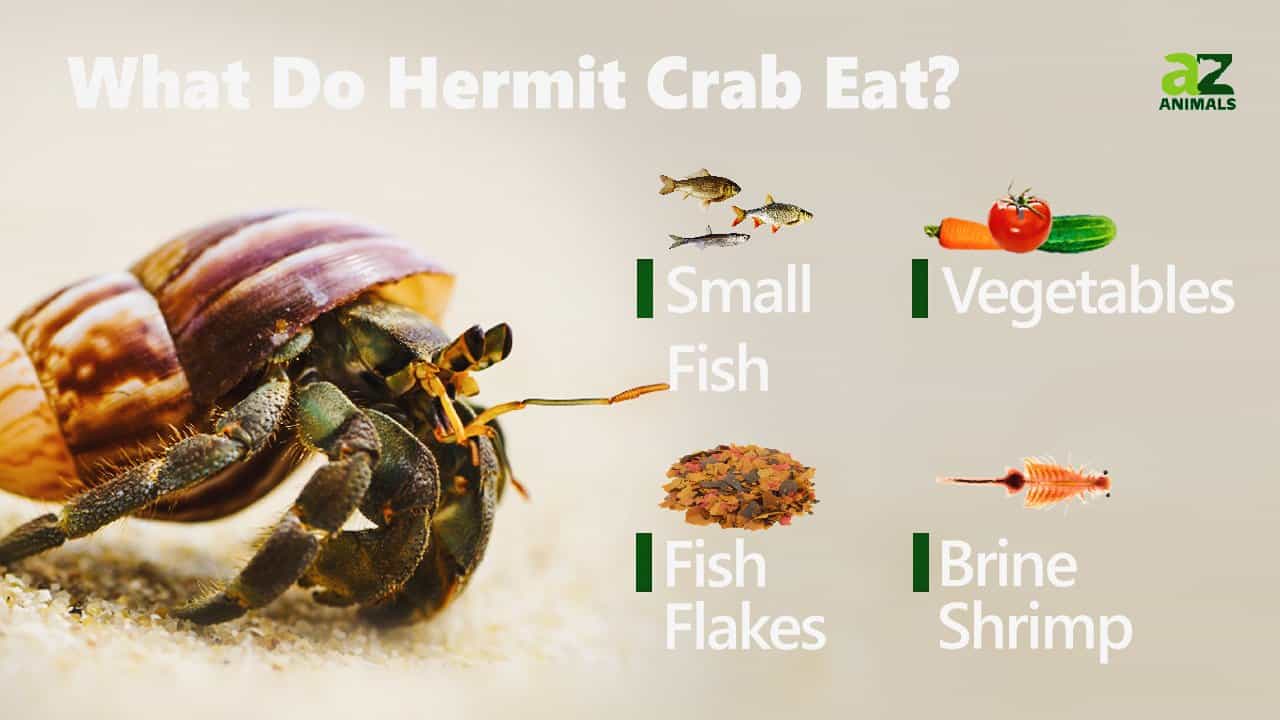Hermit crabs are a fascinating type of crustacean that have adapted to life in a salvaged shell. Unlike other crabs, hermit crabs lack a hard outer shell on their abdomen. This soft, vulnerable underside is why they rely on discarded mollusk shells for protection. But what do these resourceful little creatures eat when left to forage in their natural environments?
With over 1,100 hermit crab species found worldwide, their dietary preferences in the wild span a diverse range From fruit and carrion to algae and seaweed, hermit crabs are skilled opportunistic feeders Understanding their natural feeding behaviors provides insight into properly caring for pet hermit crabs, as well as preserving their wild habitats.
An Overview of Hermit Crab Diets
Hermit crabs are omnivores, meaning they eat both plant and animal matter Their classifications as either terrestrial or marine creatures influences the specific types of foods consumed
Terrestrial hermit crabs forage for food on land in tropical coastal areas. Their diet consists of:
- Fruits and berries
- Decaying plant matter
- Carrion from corpses
- Insects
- Tree sap
- Debris and detritus
Marine hermit crabs scavenge for food throughout ocean habitats. Their diet includes:
- Algae
- Seaweed and seagrasses
- Sponges
- Plankton
- Mollusks
- Worms
- Carrion of fish and seabirds
- Coral polyps
With such diversity, the eating habits of hermit crabs depend largely on their habitat and food availability.
Hunting Strategies of Land-Dwelling Species
Terrestrial hermit crabs employ various foraging tactics to find their next meal
-
Follow scent trails to locate fruits and carrion. Their antennae can detect smells up to 6 inches away.
-
Wander aimlessly until chancing upon edible items. Their exploratory nature leads them to food sources.
-
Monitor activity at feeding grounds. Many will revisit known food locations.
-
Dig through substrate in search of insects, eggs, and buried items. They sift through sand and soil.
-
Climb trees and rocks to find sap, fruit, and bird eggs. Their legs and claws allow climbing.
-
Feed at shoreline to access seafood debris washed up by waves. Shells protect their gills from drying out.
-
Attack live prey like small insects if easily available. They have sharp pincers for grabbing.
-
Act as scavengers by congregating on carrion. Multiple crabs can feed at once.
Their flexible tactics ensure they can find diverse nutrition sources on land.
Foraging Behaviors of Marine Species
Marine hermit crabs rely on these underwater strategies:
-
Sift through seabed sediment for worms, mollusks and other buried creatures. Their leg hooks help dig.
-
Grasp at passing debris caught in currents. This nets scraps of algae and carrion.
-
Climb on corals and sponges to graze on polyps, algae coating, and trapped plankton. Dextrous legs enable climbing.
-
Comb seaweed beds and seagrass for snippets to eat. Dense beds harbor ample plant growth.
-
Act as scavengers on large food falls like whale carcasses. Many individuals congregate to feed.
-
Hunt slow-moving invertebrates like sea cucumbers. Pincers allow them to capture live prey.
-
Filter feed on plankton floating in the water column. Their fan-like mouthparts filter small particles.
Their aquatic mobility and adaptability facilitates feeding on diverse food sources beneath the waves.
Key Factors Influencing Diet Selection
Several elements shape a hermit crab’s diet in the wild:
-
Habitat – Marine crabs eat more algae and plants while land crabs consume more carrion and fruits.
-
Availability – Scarce resources lead them to expand their diets out of necessity.
-
Competition – Rival crabs and other species influence what food remains accessible.
-
Seasons – Certain foods peak in abundance at different times of year.
-
Size – Larger crabs can tackle bigger foods and greater risks.
-
Molting – Their diet changes while growing a new shell to require more calcium.
-
Reproduction – Egg-bearing females have increased nutritional demands.
Their diverse, opportunistic eating allows adapting to varying conditions in the wild.
Unique Adaptations for Feeding
Hermit crabs possess specialized traits to facilitate their omnivorous scavenging:
-
Sensory appendages – Antennae detect chemicals from potential food sources nearby.
-
Grasping claws – Serrated pincers break apart, hold, and shovel food to their mouths.
-
Mouthparts – Mandibles crush food. Maxillae manipulate and taste.
-
Leg hooks – Grappling leg tips provide leverage for prying food from rocks or digging in sediment.
-
Shell housing – Their mobile shelters allow terrestrial hermit crabs to keep gills moist, enabling foraging on land.
These adaptations equip hermit crabs for exploiting a wide range of food in their environments.
Implications for Care of Pet Hermit Crabs
For pet hermit crabs to thrive, their diet should mimic the variety of foods eaten by their wild counterparts:
-
Include vegetables, fruits, nuts, cleaned eggshells and meats for protein.
-
Sprinkle in algae, dried seaweed and calcium powder for marine mineral nutrition.
-
Provide both dry and wet foods to account for consuming both plant and animal matter.
-
Choose commercial diets made for hermit crabs to supply complete nutrition.
-
Give new foods regularly to add diversity and novelty.
By consulting what they forage on in nature, pet owners can refine care to meet the dietary needs of their captivating crustacean companions. Taking cues from the wild supports their health and enriches their captive lives.
So next time you spot a tiny hermit crab scuttling across the beach carrying its shell-house, take a moment to appreciate the impressivefeats of foraging that allow its survival. Though small, these creatures demonstrate outsized adaptability and resourcefulness in finding their next meal.

Step 7: Stir & Microwave


Step 4: Choose Your Ingredients



